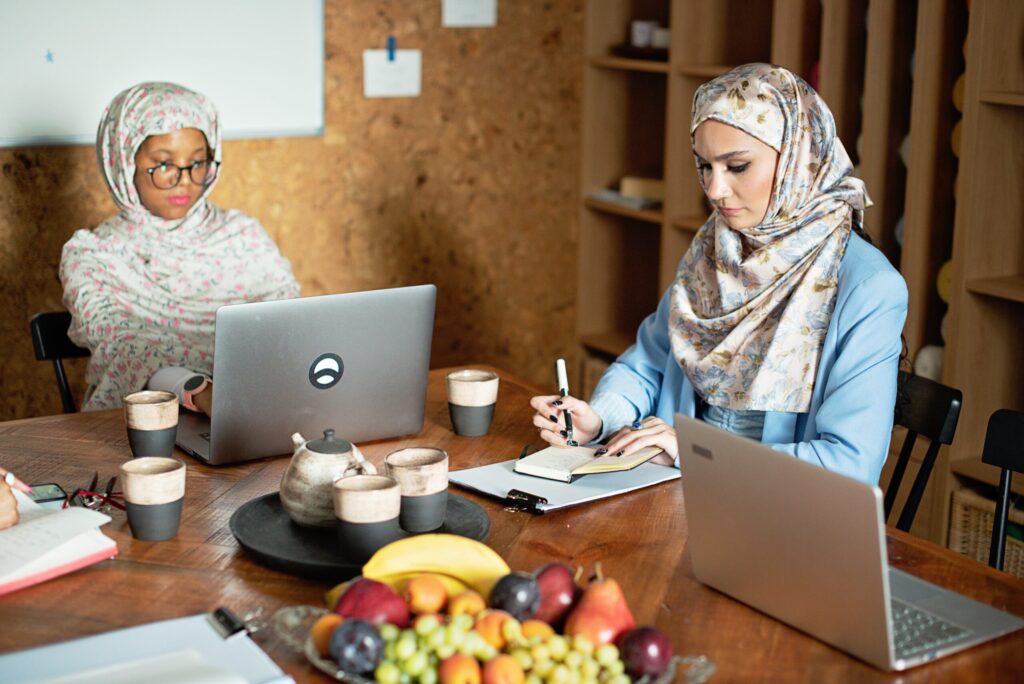Why Blue Light Can Be More Dangerous for Arab Americans' Eyes

The effects of excessive blue light exposure on the eyes are well-established, but it appears that these risk factors may be specifically problematic for Arab Americans. A recent study found that they are 19% more likely than their Caucasian counterparts to develop cataracts and 272% more likely to develop diabetic retinopathy. These existing risk factors may be exacerbated by prolonged screen times in today’s digital world, and in particular, the exposure to blue light.
Indeed, it’s important to understand how blue light can pose health dangers for the 3.5 million Arab Americans living in the United States.
Blue light and the eyes
While sunlight is the largest source of blue light, it can also come from LED lights and televisions, computer monitors, phones, and tablets. The blue light received from screens is far less than that of the sun. However, health concerns arise because these screens are closer to the eyes for prolonged periods. While some blue light is needed to regulate humans’ circadian rhythms and boost alertness, too much blue light has been known to cause decreased contrast, leading to digital eye strain. Long-term exposure can damage the retinal cells. Because the macula is part of the retina, retinal damage may result in dry age-related macular degeneration (AMD)—a condition that, per the earlier discussed study, 10% of 1,390 Arab Americans are likely to develop compared to only 8.9% of nearly 5,000 white Americans.
Vision issues among Arab Americans
Arab Americans are vastly underrepresented in health research, but what we do know is that, aside from AMD, the population also carries a higher risk of cataract development. A 2021 study revealed that 460 nm irradiation (or blue light) caused the most cataracts, even more so than UVB and UVA radiation. This means that blue light exposure can have particularly harmful effects on the population.
While over 80% of Arab Americans are US citizens, their genetic heritage remains tied to their homeland. A 2023 study on the Middle East and North Africa (MENA) region, where the population hails from, found that 314 years of healthy life are lost per 100,000 people due to vision loss. The highest incidence of years lost was reported among 15 to 19-year-old males and 10 to 29-year-old females, precisely the population that would be most likely to have prolonged screen exposure. These findings underscore the importance of blue light protection measures for Arab Americans.
Blue light protection methods
Arab Americans can take a multi-pronged approach to minimize the effects of blue light. A 2020 study of Arabic-speaking immigrants found that acculturation into a Western lifestyle caused a significant spike in nutrient-poor but calorie-dense foods. In this case, reverting to a traditional diet could help. Eye health-boosting foods like beans and legumes, nuts and seeds, and dark leafy vegetables like arugula and dandelion greens are already staples of a Middle Eastern Mediterranean diet, as we discussed previously.
Screen time is inevitable for Arab Americans in school or at work. This means protective measures like blue light glasses are necessary to filter blue-violet light while still preserving visual comfort. Multifunctional lenses like EBDBlue 360 have blue-violet light filtering, UV protection, and an anti-reflective coating for round-the-clock protection. Wearing protection lowers overall exposure to blue light over time, which can minimize the risk of cataract formation for vulnerable Arab Americans.
Aside from eyewear, Arab Americans can outfit digital screens themselves with appropriate blue light filtering. To accomplish this, the ZAGG Glass XTR3 screen protectors contain Eyesafe RPF60 technology. This filters 60% of blue light in the 435-450 nm range, providing a physical screen shield while also keeping eyes safe from excessive blue light. These protection methods could prevent blue light from disrupting circadian rhythms and wreaking long-term havoc on eye health.
While Arab Americans have a higher risk of eye and vision issues, hope is not lost. With lifestyle changes and blue light-filtering eyewear, they can take measures to preserve their vision for longer.
Please note that this post was written by a contributor and does not necessarily reflect the views of Arab America’s employees. These posts help allow Arab America to keep producing our wonderful original content.
Don’t forget to check out Arab America’s blog!


